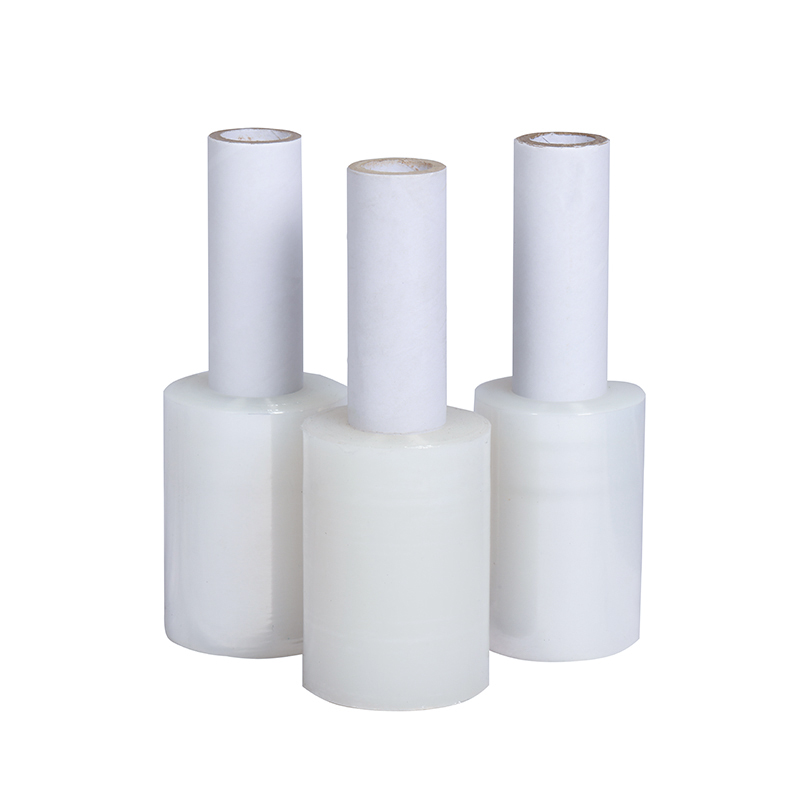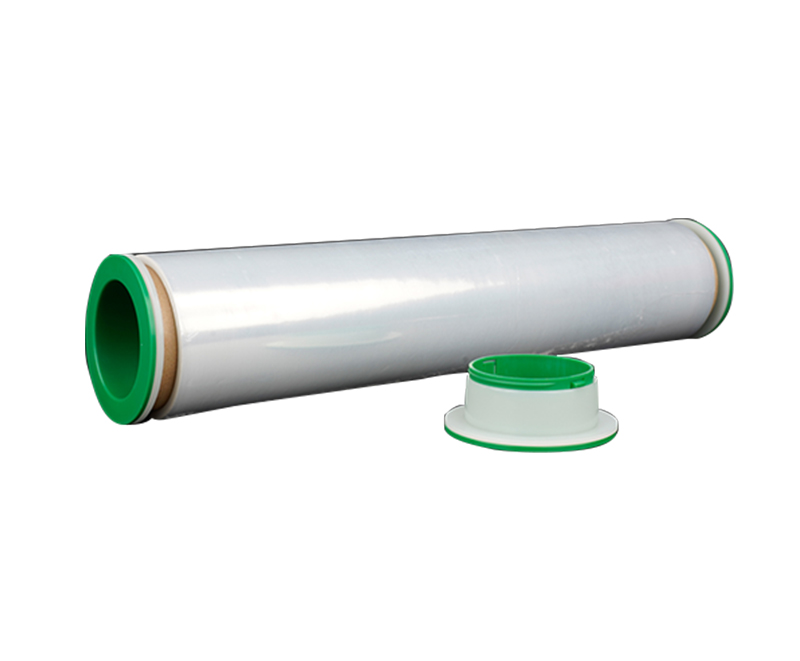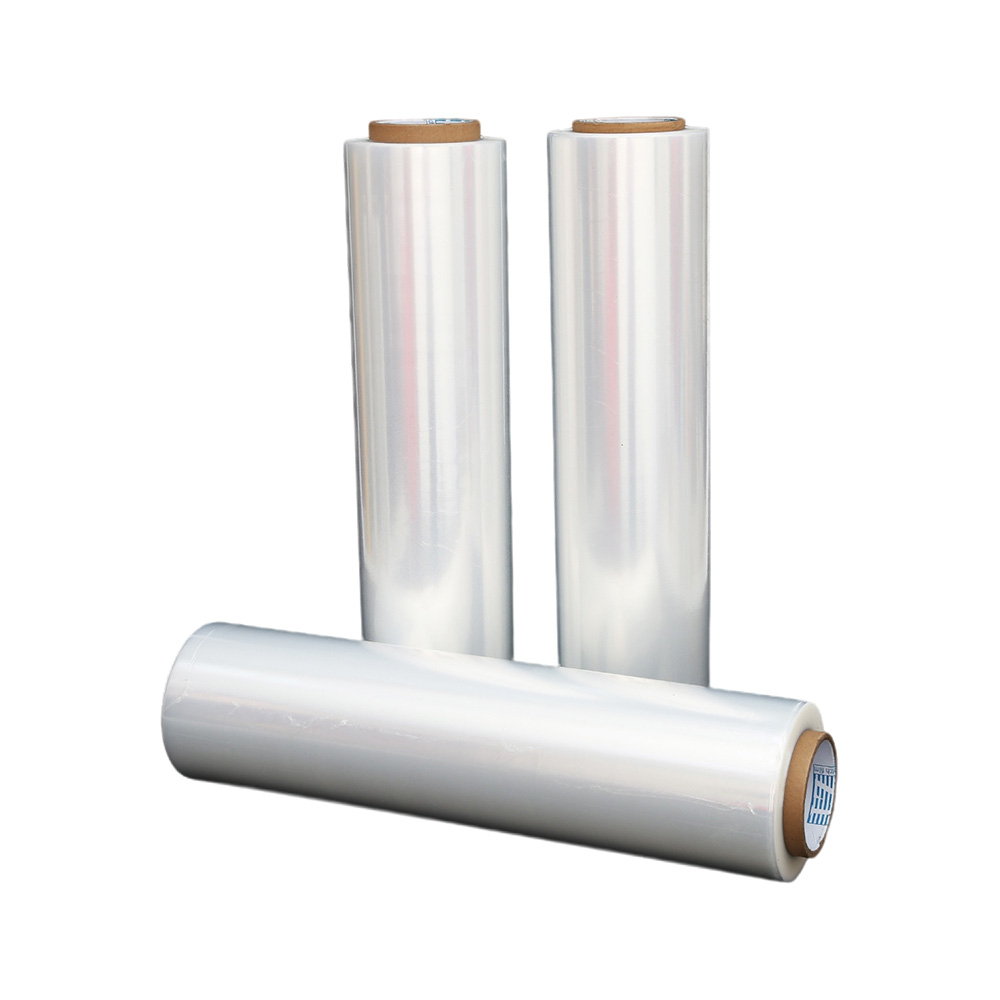Guide to Making Stretch Film
Source:Guide to Making Stretch FilmTime:2025-03-12Visitors:
Stretch film is a versatile and widely used packaging material known for its ability to secure and protect goods during transportation and storage. Whether you’re a business owner looking to understand the production process or an enthusiast curious about industrial manufacturing, this guide will walk you through the essentials of making stretch film. From raw materials to quality control, we’ll cover the key steps and considerations involved in creating high-quality stretch film.
What Is Stretch Film?
Stretch film, often made from polyethylene (PE), is a thin, stretchable plastic film used to wrap and stabilize products. Its elasticity allows it to tightly bind items, offering moisture-proof, dust-proof, and tamper-resistant protection. Common applications include pallet wrapping, bundling packages, and securing cables (like wire film). The manufacturing process requires precision to ensure properties like tensile strength, puncture resistance, and transparency meet industry standards.
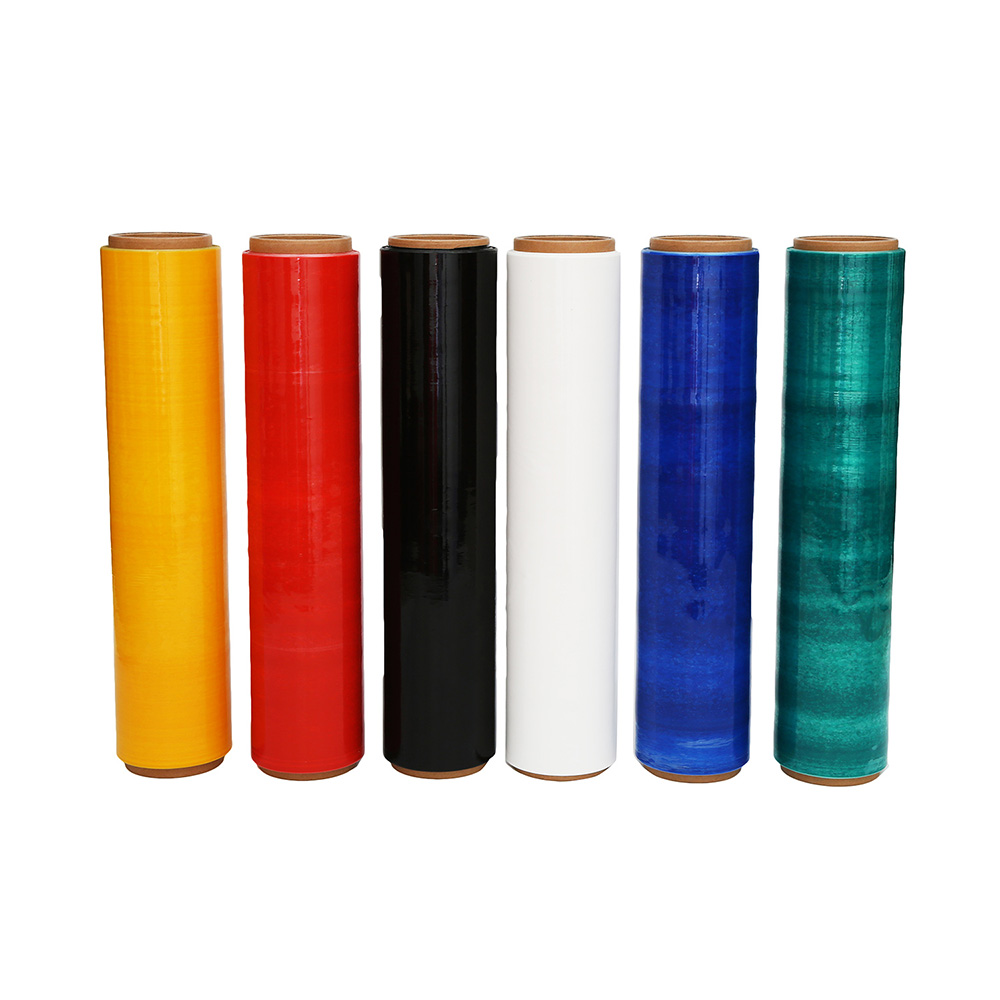
Materials Needed for Stretch Film Production
The foundation of stretch film lies in its raw materials. Here’s what’s typically required:
- Polyethylene Resin (PE): The primary ingredient, usually linear low-density polyethylene (LLDPE), provides flexibility and strength. High-density polyethylene (HDPE) may be blended for added durability.
- Additives: These enhance specific properties:
- UV stabilizers for outdoor use.
- Colorants for tinted films (e.g., colored stretch film).
- Tackifiers to improve clinginess.
- Masterbatch: A concentrated mixture of pigments or additives blended into the resin for uniform distribution.
The quality of these materials directly impacts the film’s performance, so sourcing from reliable suppliers is critical.
Step-by-Step Process of Making Stretch Film
Producing stretch film involves a combination of advanced machinery and skilled oversight. Below is a detailed breakdown of the process:
Step 1: Resin Preparation
The process begins with preparing the polyethylene resin. The resin pellets are mixed with additives in precise ratios, depending on the desired film properties (e.g., thickness, stretchability). This mixture is then fed into an extruder—a machine that melts and processes the plastic.
Step 2: Extrusion
In the extruder, the resin is heated to a molten state (typically between 200°C and 300°C, depending on the material). The molten plastic is then forced through a die, which shapes it into a thin, continuous sheet. Two common methods are used:
- Cast Extrusion: The molten plastic is cooled on chilled rollers, producing a smooth, clear film ideal for hand-use or machine-use stretch film.
- Blown Extrusion: Air is blown into the molten plastic to form a bubble, which is then collapsed and cooled. This method creates a stronger, less transparent film, often used for heavy-duty applications.
Step 3: Stretching and Orientation
Once the film is extruded, it’s stretched to enhance its tensile strength and elasticity. This can be done in two ways:
- Machine Direction Orientation (MDO): Stretching the film lengthwise to improve strength.
- Pre-Stretching: A controlled stretching process during manufacturing to create pre-stretched film, which requires less force during application.
Step 4: Cooling and Solidification
The stretched film is rapidly cooled using air or water-cooled rollers to lock in its properties. Proper cooling ensures the film retains its clarity, softness, and durability.
Step 5: Winding and Slitting
The cooled film is wound onto large rolls. For specific applications (e.g., hand-use or bundling stretch film), it’s slit into narrower widths using precision cutting tools. Handles or custom printing may also be added at this stage for branded or user-friendly products.
Step 6: Quality Control
Quality assurance is vital to producing reliable stretch film. Key checks include:
- Thickness Consistency: Measured in microns (e.g., 17-25 microns for standard films).
- Tensile Strength: Ensures the film can withstand stretching without tearing.
- Cling and Transparency: Critical for usability and aesthetics. Manufacturers often follow standards like ISO 9001 to maintain consistency, conducting self-inspections at each production stage and final outgoing quality control (OQC).
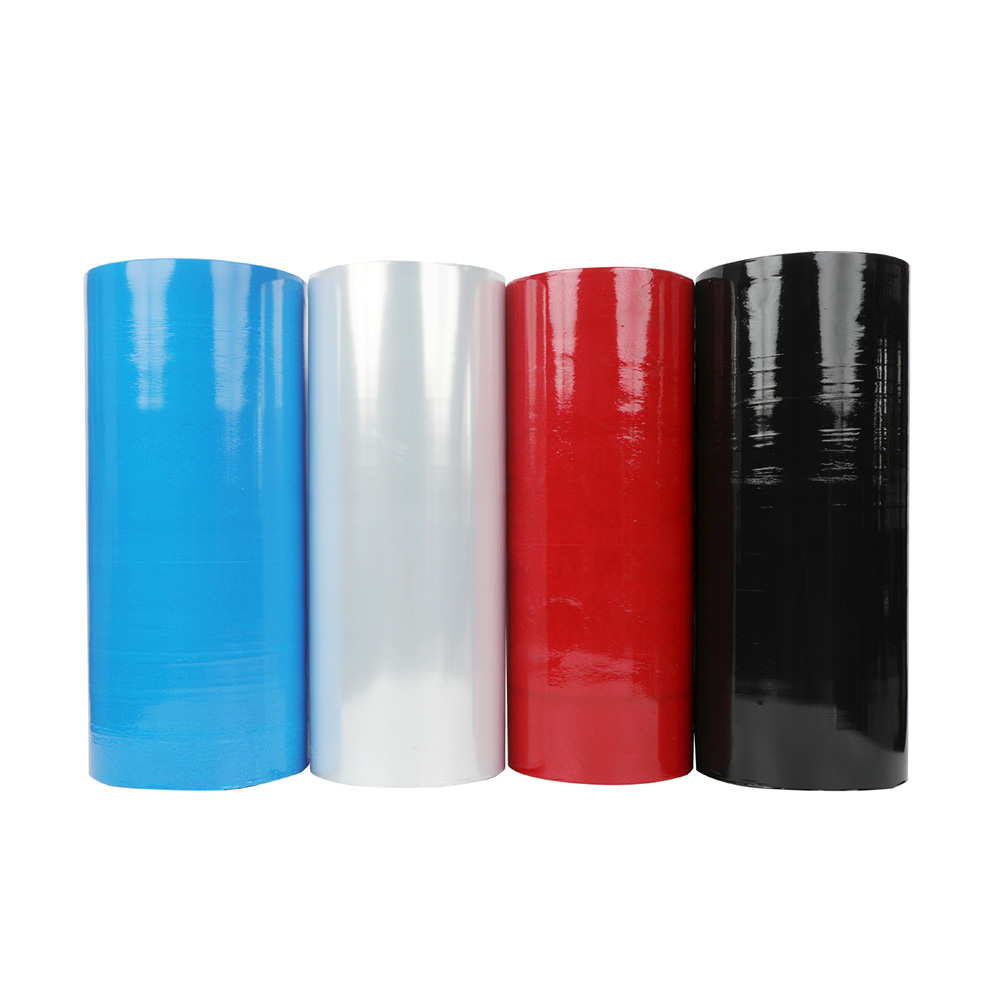
Equipment Required for Stretch Film Manufacturing
To produce stretch film efficiently, specialized machinery is essential:
- Extruder Machine: Melts and shapes the resin.
- Die System: Determines the film’s initial form (cast or blown).
- Stretching Unit: Enhances elasticity and strength.
- Cooling Rollers: Solidifies the film.
- Winding and Slitting Machines: Prepares the final rolls.
Investing in advanced equipment and maintaining it properly ensures high output and consistent quality.
Factors Affecting Stretch Film Quality
Several variables influence the final product:
- Material Quality: Impurities in the resin can weaken the film.
- Temperature Control: Too high or low temperatures during extrusion can affect clarity and strength.
- Stretching Ratio: Overstretching may thin the film excessively, reducing durability.
- Environmental Conditions: Humidity and dust in the production area can impact film purity.
Balancing these factors requires expertise and rigorous process monitoring.
Tips for Optimizing Stretch Film Production
For businesses or manufacturers aiming to improve their stretch film output, consider these practical tips:
- Use High-Quality Raw Materials: Invest in premium LLDPE and additives for better performance.
- Calibrate Equipment Regularly: Ensure machines operate within optimal parameters.
- Test Batches: Run small-scale tests before full production to fine-tune settings.
- Focus on Sustainability: Incorporate recyclable materials or biodegradable additives to meet eco-friendly demands.
Common Applications of Stretch Film
Stretch film’s versatility makes it indispensable across industries:
- Logistics: Securing pallets for shipping.
- Food Industry: Wrapping perishable goods with breathable films.
- Manufacturing: Bundling components or protecting machinery parts.
Customization options, like colored or printed films, further expand its uses.
Summary
Making stretch film is a precise process that blends science, technology, and quality control to produce a reliable packaging solution. By understanding the materials, steps, and factors involved, manufacturers can create products that meet diverse customer needs—from high-strength machine-use films to eco-friendly pre-stretched options. For those seeking top-tier stretch film, industry leaders like Dongguan Zhiteng Plastic Product Co., Ltd. set the standard. With over 16 years of experience and a commitment to quality (certified by ISO 9001), Zhiteng delivers innovative solutions trusted by global clients, including giants like Walmart. Whether you’re starting production or sourcing film, this guide offers a solid foundation for success.
Recommended Products
Ranked in the same article
- how to use the stretch film technology to r
- How can we get detailed price list?
- Five common quality problems of PE protecti
- Plastic film degradation
- How to guarantee punctual shipment for our
- Gauge to Micron and Millimetre Conversion G
- What is the difference between stretch film
- Testing the permeability of stretch film
- Stretch film temperature requirements
- Electrical wire film VS electrostatic film
- Why insufficient transparency of stretch w
Latest news articles
- What Is Red Stretch Film and What Are Its B
- What is Stretch Film Used For?
- Exploring the Versatility of PE Stretch Fil
- Stretch Film Wrap: Exploring Its Advantages
- The Influence of Stretch Film Thickness on
- PE stretch film how to cut?
- The use of pe stretch film
- PE vs PVC Stretch Film: A Comprehensive Gui
- What Is the Difference Between Shrink Wrap
- Testing the permeability of stretch film
- Factors That Affect the Stretching Function

